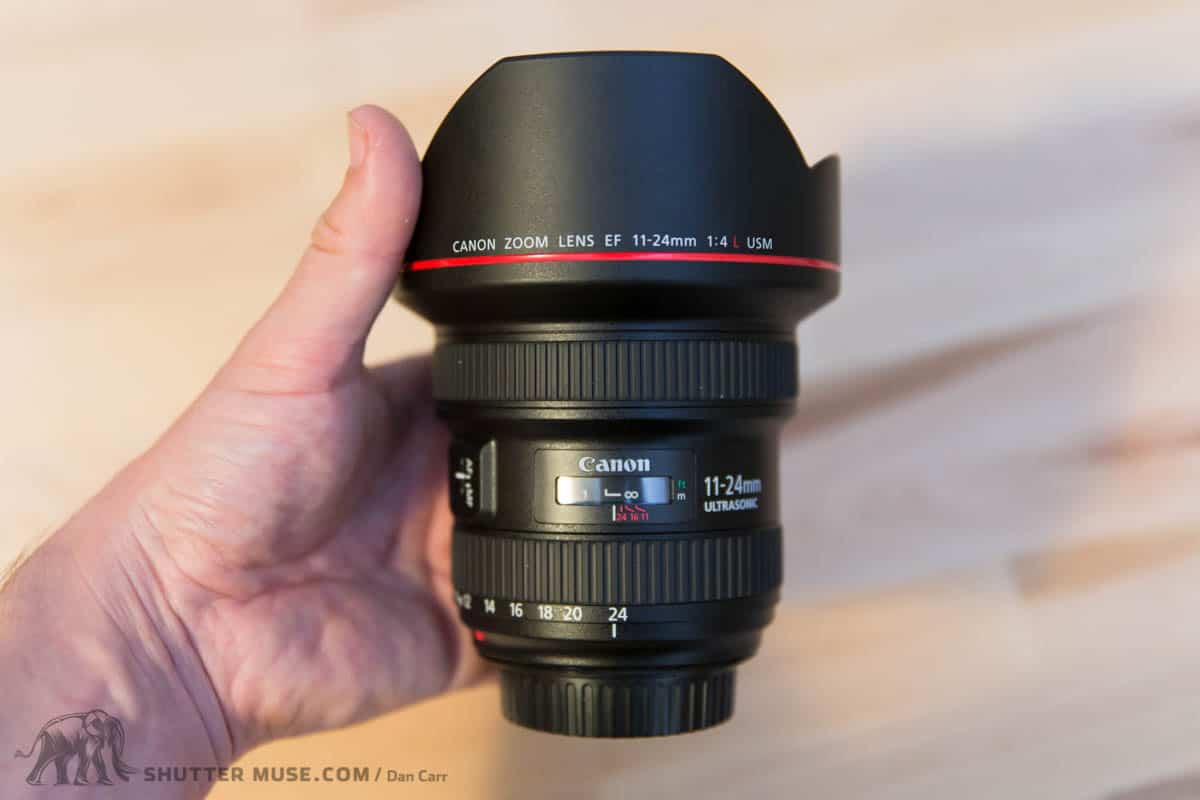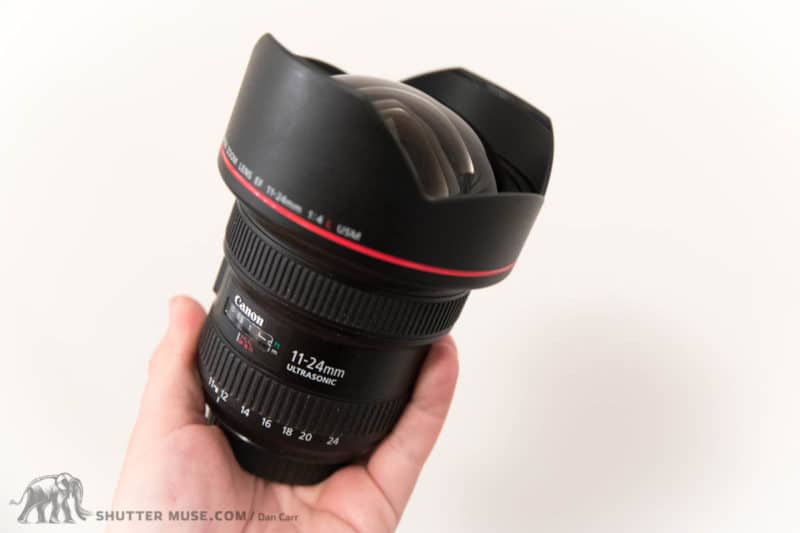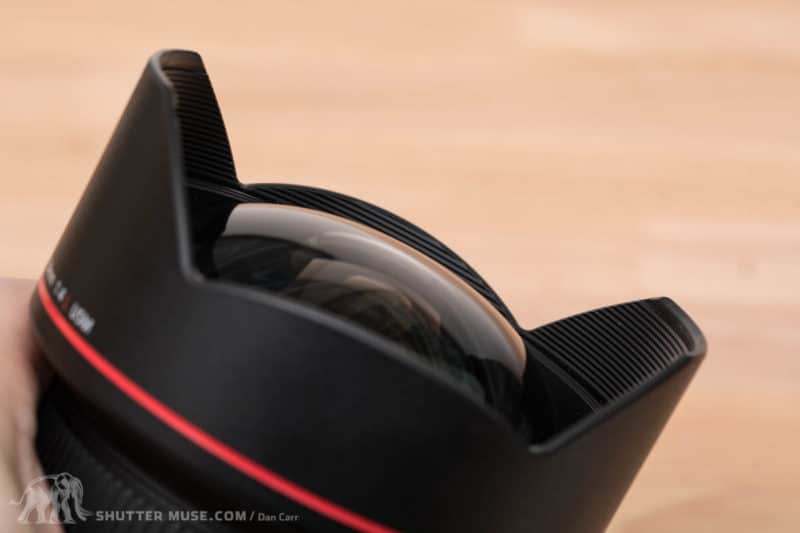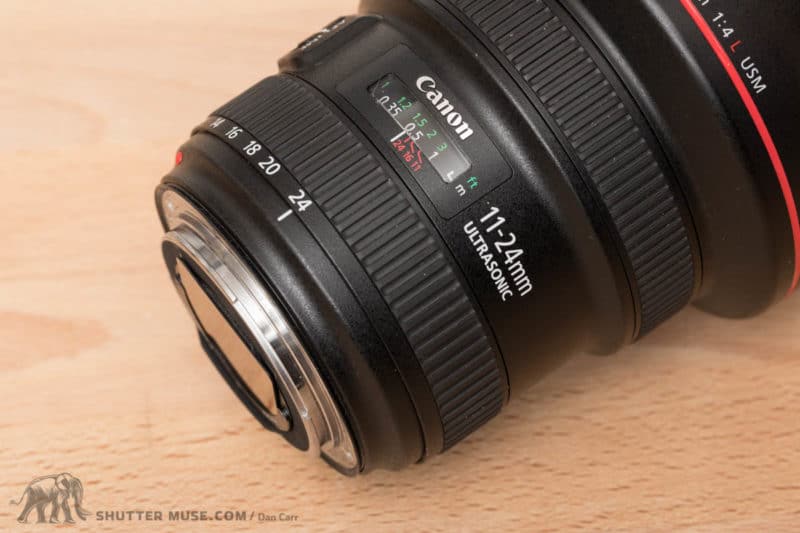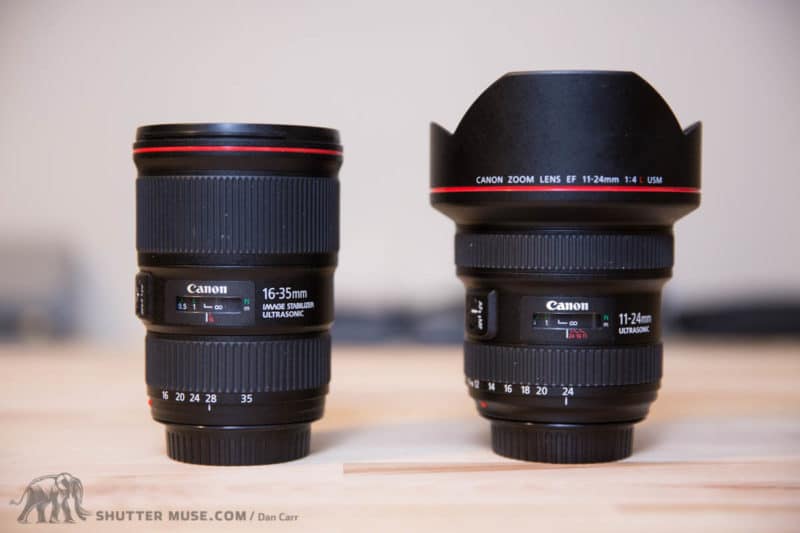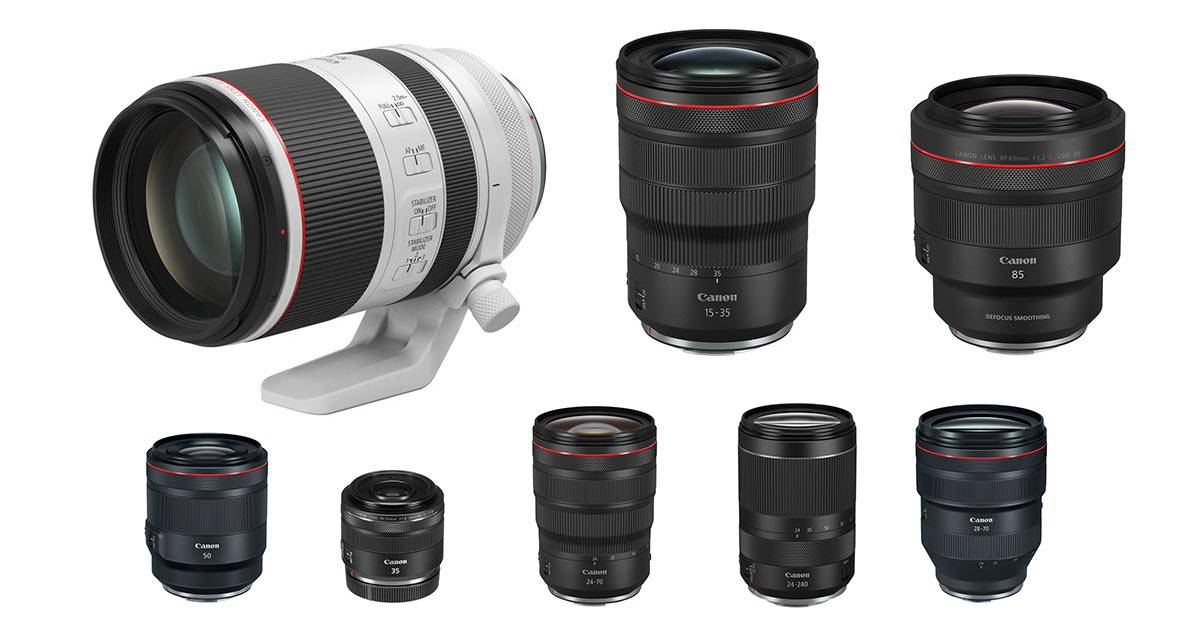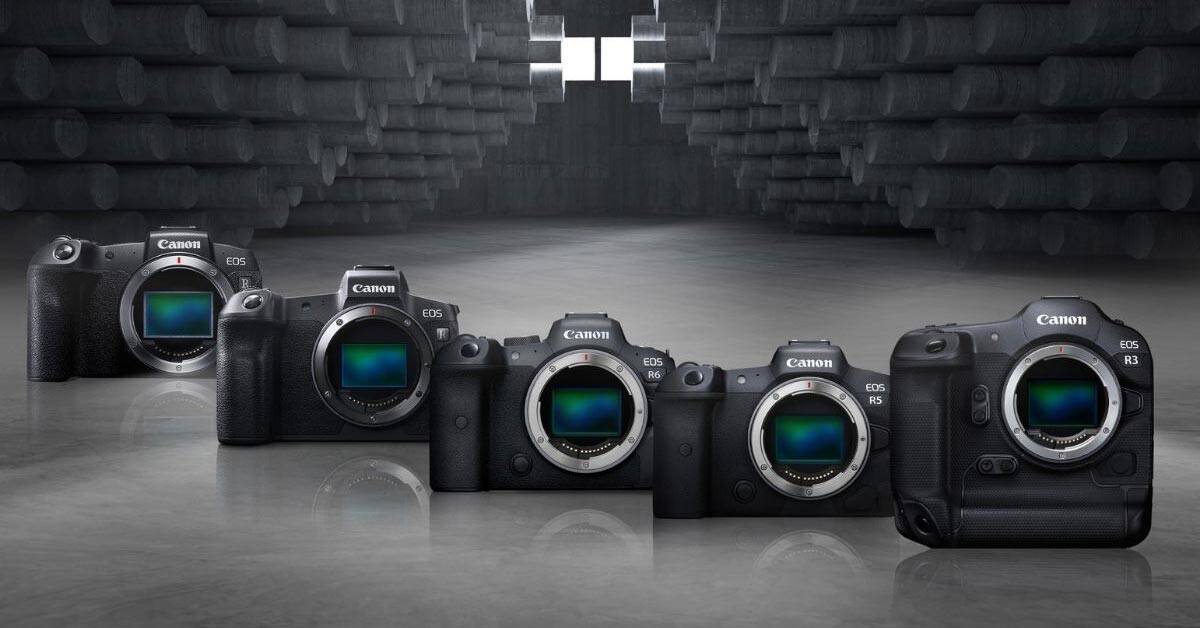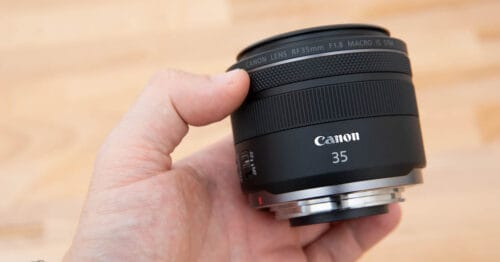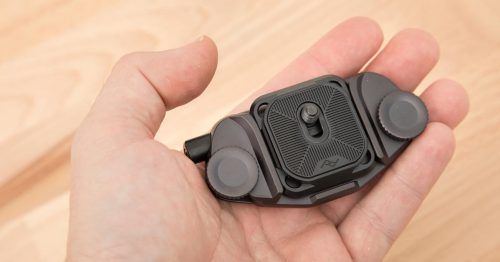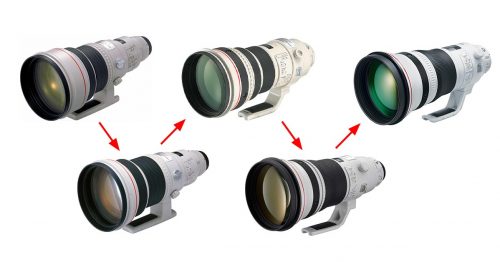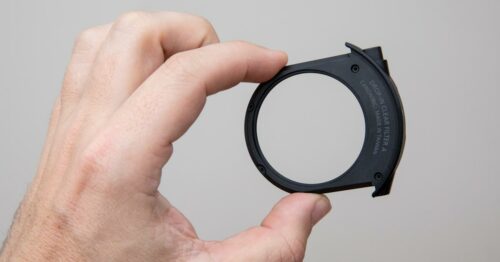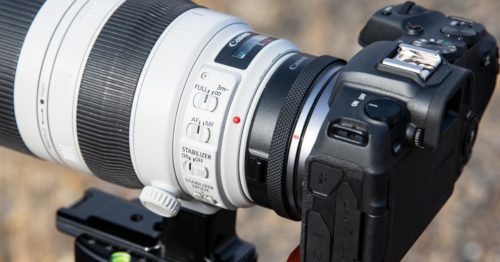The Canon 11-24mm f/4 L is the widest rectilinear lens that was produced for the Canon EF mount. Having owned this lens myself for several years, I can attest that 11mm is staggeringly wide for normal usage, and in fact, it makes it a challenging lens to compose with when you zoom out to the extremities of the range.
However, if you can master it, it does produce some staggering and often unique results. If you are shooting alongside friends that “only” have a 16mm wide-angle, they will be absolutely blown away by how much more you can fit into your scene. In fact, I have written about this lens in another article titled “My Top Two Landscape Photography Lenses“, so I think that tells you what I feel about its performance.
Not only is this lens optically impressive, but it’s also physically impressive as well. The huge bulbous glass element is quite spectacular to examine closely, and the heft of the lens reassures you that it has been build for many years of hard usage. This is Canon L-Series build quality at its finest.
Zoom and focus rings are buttery smooth and offer just the right amount of resistance. Over the years I have owned many L-Series lenses, and whilst all have been built well, I have noticed a considerable variation in the feel of the zoom and focus rings. Some offer very little resistance and feel quite cheap compared to the build (and price) of the lens, while others offer nice resistance and a damped feeling as they rotate. The Canon 11-24mm f/4 L is definitely in that preferable latter category.
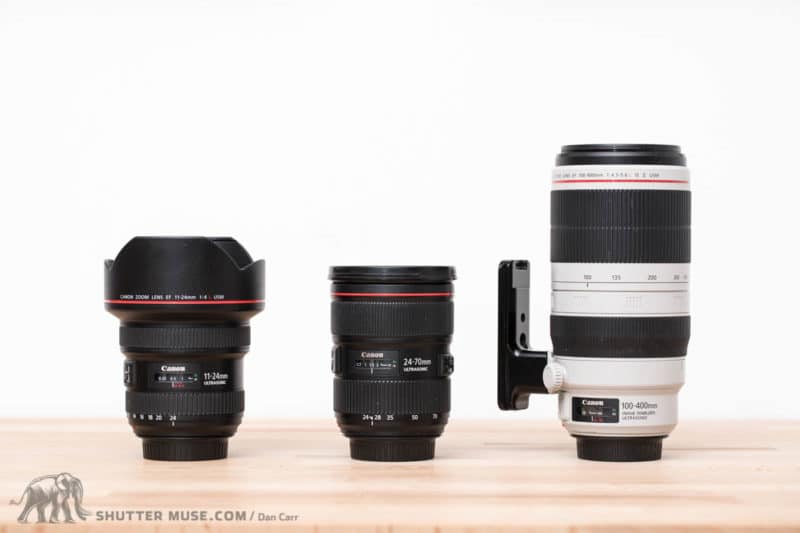
With such a large front element, it is hard for this lens to feel well balanced on any camera, but the importance of this is probably lessened by the fact that its main uses – landscape and architectural photography – will mostly require a tripod anyway.
Where to Buy
Using my links for your purchases is appreciated. The Canon EF 11-24mm f/4 L lens is available from the links below.
- Canon EF 11-24mm f/4 L USM – B&H Photo / Amazon / Adorama / WEX (UK) / Camera Canada

